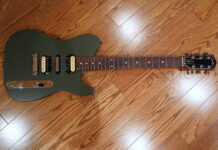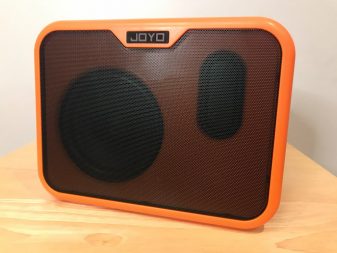 A few weeks ago, I took the Joyo MA-10E for a spin. It is a simple two-channel amplifier, housed in a very portable and compact package. It’s the perfect travel companion because it won’t take up a lot of space, and it’s not very heavy. The idea behind it, I think, is to have a very convenient practice tool—no matter where you’re going. Joyo has another model, the MA-10A, for acoustic players. It’s built on the same concept, but it’s intended to be used with acoustic instruments. I spent some time exploring the features and the general sound quality of the unit.
A few weeks ago, I took the Joyo MA-10E for a spin. It is a simple two-channel amplifier, housed in a very portable and compact package. It’s the perfect travel companion because it won’t take up a lot of space, and it’s not very heavy. The idea behind it, I think, is to have a very convenient practice tool—no matter where you’re going. Joyo has another model, the MA-10A, for acoustic players. It’s built on the same concept, but it’s intended to be used with acoustic instruments. I spent some time exploring the features and the general sound quality of the unit.
First of all, I recorded a couple of sound examples. They include some different playing styles and a comparison between the normal and bright setting. I’ve also documented my initial impressions of the amp.
Humble features in a colourful package
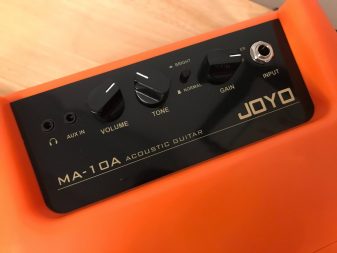 The MA-10A has the same shell as the MA-10E electric model. It has an eye-catching orange colour instead of the more understated black that’s more common in amp building. It’s actually quite refreshing, and the contrast with the black grill is very nice. The five-inch speaker housed inside is a full-range speaker. This is important for acoustic instruments because we need to hear all the detail of all the frequencies in the instrument’s tone. This is not the case with the electric guitar, whose tone is greatly coloured by the speaker in its appropriate amplifier. Its power rating is 10W. While it’s not much, it will still provide enough amplification for practising.
The MA-10A has the same shell as the MA-10E electric model. It has an eye-catching orange colour instead of the more understated black that’s more common in amp building. It’s actually quite refreshing, and the contrast with the black grill is very nice. The five-inch speaker housed inside is a full-range speaker. This is important for acoustic instruments because we need to hear all the detail of all the frequencies in the instrument’s tone. This is not the case with the electric guitar, whose tone is greatly coloured by the speaker in its appropriate amplifier. Its power rating is 10W. While it’s not much, it will still provide enough amplification for practising.
There are three knobs to tweak and help you achieve the sound you’re looking for. First of all, there’s a gain knob. In case you’re not that familiar with what gain does, it’s the amount of amplification that the signal goes through. The higher the setting, the more the signal is multiplied. This affects the nature of the sound, and you should explore with different settings. Being an acoustic amplifier, the MA-10A won’t distort or anything, but there are slight changes in character that you can explore.
The volume directly affects the loudness of the signal after it passes through the gain circuit, so it won’t change its essence. The tone knob is your EQ; turning it counterclockwise will reduce high frequencies and produce a bassier quality. The high frequencies will be emphasized and bass reduced if you turn it the other way. Lastly, a bright switch is available to add some high-end sparkle to your tone.
You’ll be able to play along with your favourite recordings thanks to a 1/8th inch auxiliary input. You can even explore backing tracks to work on your repertoire, groove, and technique. There’s also a headphone output for silent (in the case of an acoustic instrument, quieter) practice. An included adapter powers the unit, but you can also use 6 x AA batteries. Considering the compact and lightweight package that the MA-10A is, this is a very welcome feature. You’ll be able to use it anywhere and won’t even require electricity.
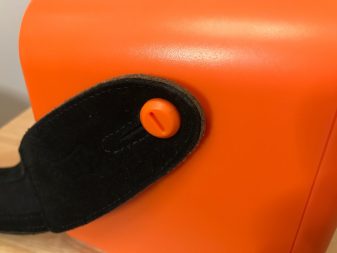
The hidden shoulder strap buckles make an appearance here as well! If you’ve read about the MA-10E, you’ll know that it has a very cool feature where you can unscrew two buckles to which you can attach a regular guitar strap to carry your amp around. I personally dig this feature a lot, and I’m glad it’s included here also. One added bonus of this feature is that you’ll have a strap handy even if you forget it at home. I’ll be the first to admit that I’ve been in that situation more than once.
Good sound quality
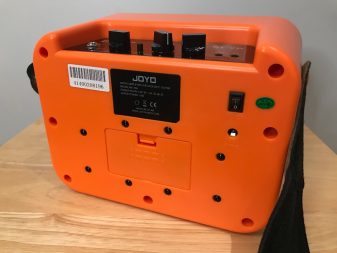 The first thing I noticed about the MA-10A is that it’s not very loud. You get some amplification, but I don’t think you’ll be busking or gigging with this unit any time soon. The sound quality, though, is good. The small speaker, by nature, reduces a bit of the low-end and general roundness of any signal you send through it. It wasn’t too hard to compensate with some tweaking of the tone knob. Depending on your electronics, you might even have some on-board options to help with the low-end.
The first thing I noticed about the MA-10A is that it’s not very loud. You get some amplification, but I don’t think you’ll be busking or gigging with this unit any time soon. The sound quality, though, is good. The small speaker, by nature, reduces a bit of the low-end and general roundness of any signal you send through it. It wasn’t too hard to compensate with some tweaking of the tone knob. Depending on your electronics, you might even have some on-board options to help with the low-end.
The bright channel is subtle, but is worth exploring. If you’re playing light arpeggiating accompaniments, it’s nice to have that texture and added airiness from the added high frequencies. For strumming or finger-picking, it may be slightly too much. That being said, all of this is subject to personal preference and particular context.
Great to use as a practice tool
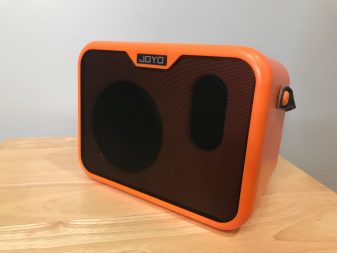 I enjoy acoustic amplifiers because you can really progress and improve your technique if you use them as a practice tool. It’s great to hear yourself from a different perspective. You’ll have a totally different angle from which to analyze your playing. Every little detail is amplified by the unit, and you’ll be able to quickly identify where the problems lie if there are any. If you spend some time working on them, you’ll definitely see progress. It’s like using a magnifying glass on your technique.
I enjoy acoustic amplifiers because you can really progress and improve your technique if you use them as a practice tool. It’s great to hear yourself from a different perspective. You’ll have a totally different angle from which to analyze your playing. Every little detail is amplified by the unit, and you’ll be able to quickly identify where the problems lie if there are any. If you spend some time working on them, you’ll definitely see progress. It’s like using a magnifying glass on your technique.
The MA-10A does just this. While it doesn’t have an incredible amount of volume, it has enough of it to help you get better. Since you can take it anywhere with you, it’s a good product to own for your practise needs, or maybe an intimate concert in the living room or at the cottage. The fact that you can use batteries to operate it greatly increases the different locations you can use it in. I can imagine it helping out with volume around a friendly campfire. It also doubles as a battery powered sound system, thanks to the auxiliary input. To me, that sounds like a lot of fun!
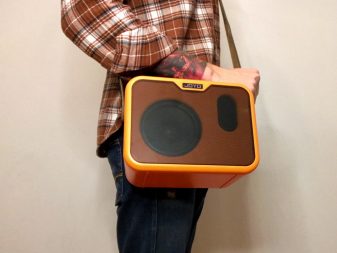
If you’re looking for something that gives you more control, I’ve recently reviewed another Joyo acoustic amplifier—the AC20. While you can’t power it with batteries, it has extra tone controls, independent built-in effects, and even a microphone channel for vocals.
The Joyo MA-10A will soon be available. Meanwhile, check out the other Joyo products on Best Buy’s website.

